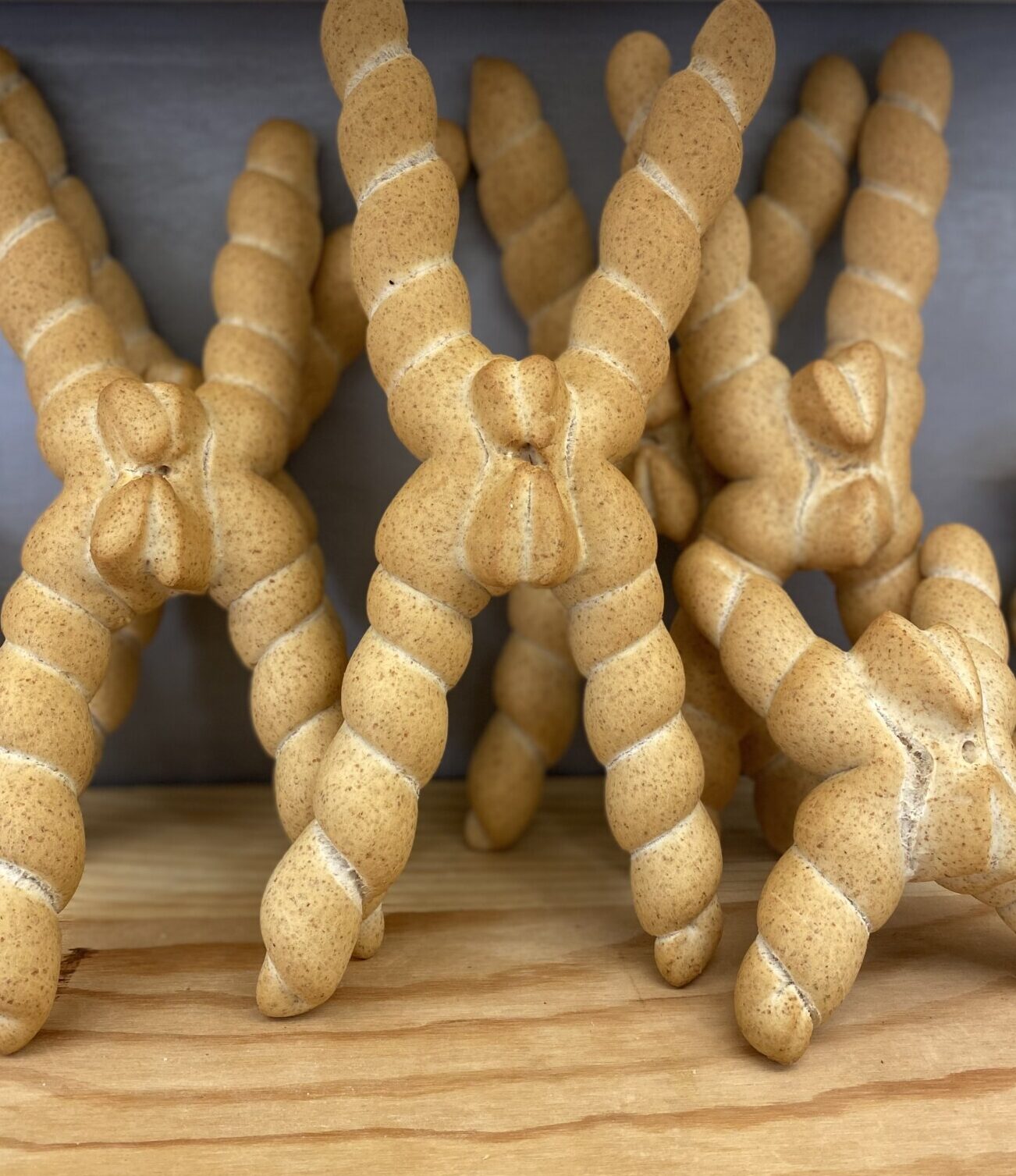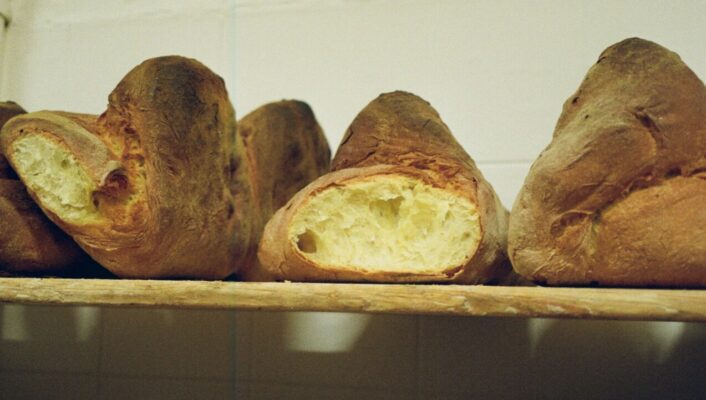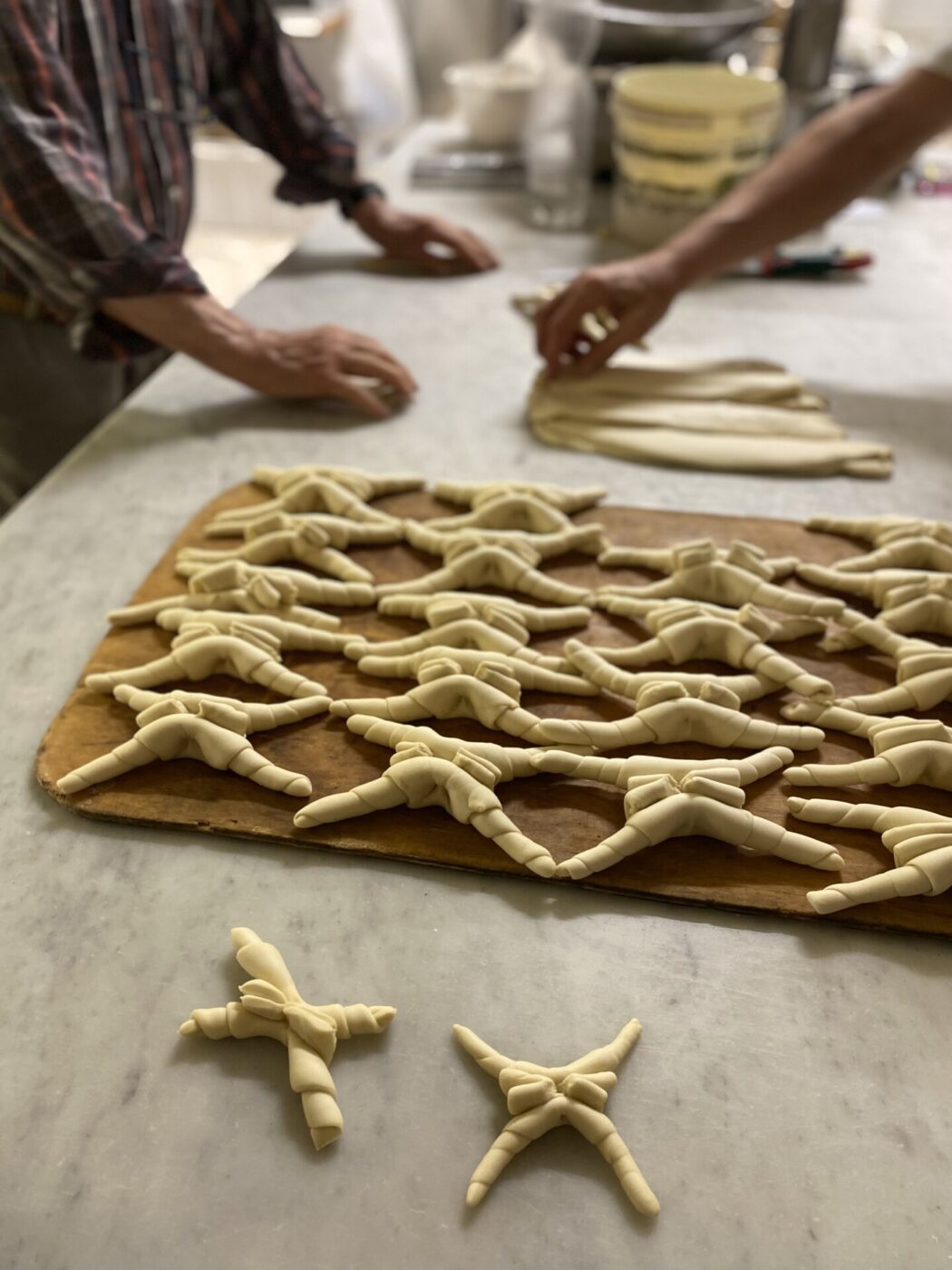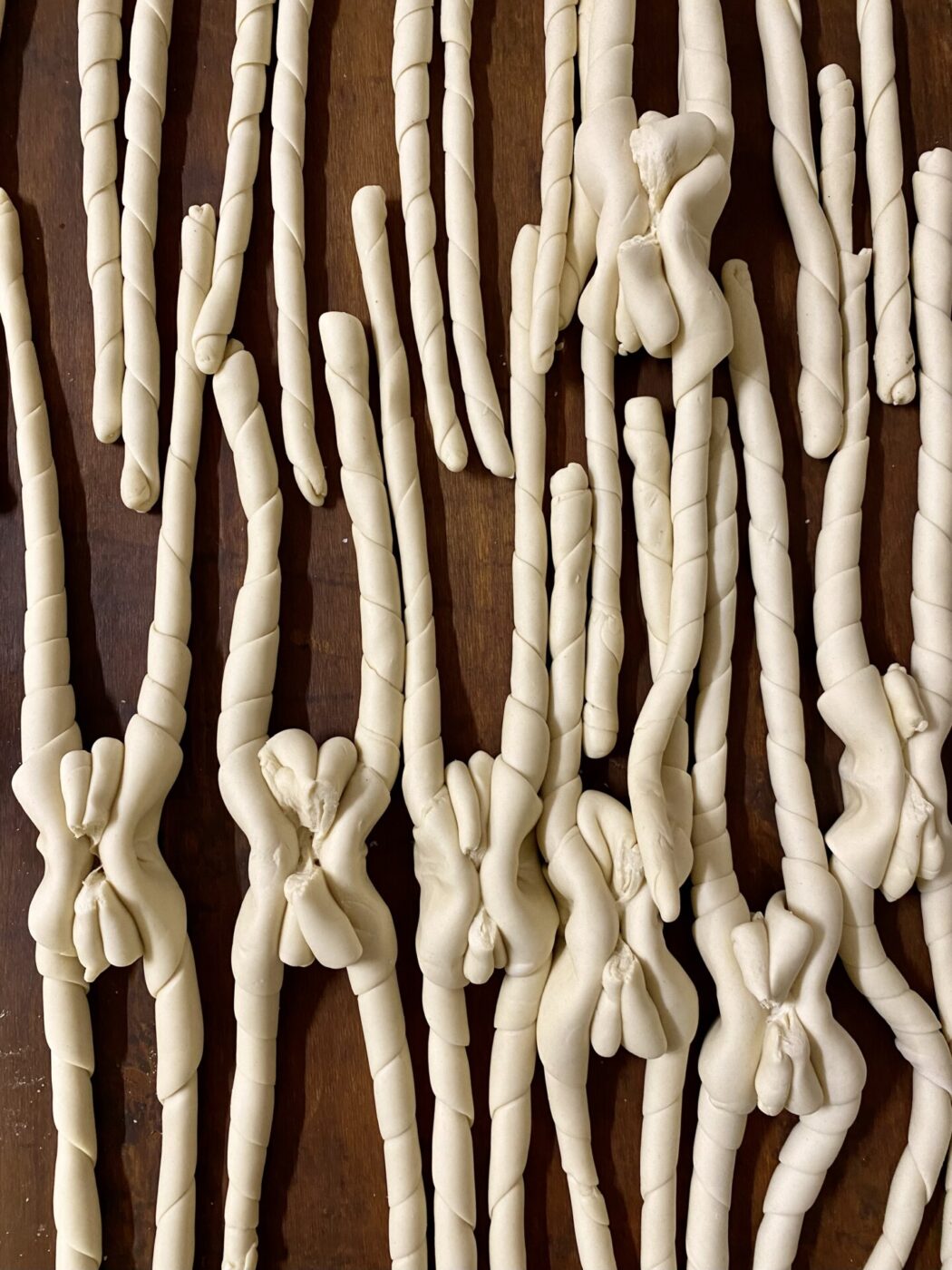The day begins early for those who practice l’arte bianca. The so-called “white art”, more commonly known as baking, is named for the artists’ medium: flour. By the time I arrive at Panificio Perdonati–on the corner of a cobble-stoned street, midway between the medieval walls that encircle Ferrara and the castle at its center–its bakers have already been at work for hours, immersed in the preservation of a tradition that has nearly 500 years of history rooted in this northern Italian town. They are making coppia ferrarese, an intricately shaped bread that only exists here.
Sergio Perdonati, the owner of the bakery, welcomes me into the kitchen. It is warm with the heat of its enormous oven and from the agile movement of the half dozen or so bakers who occupy it. The air is perfumed with the aroma of fresh bread. On one of the counters, a large container is filled with a sandy substance: the 90-year-old sourdough starter that Perdonati inherited from his father, which is the most important ingredient in their bread.
The bakers of Panificio Perdonati make coppie ferraresi according to a rigorous set of regulations that are monitored by the European Union. As a food registered within the Protected Geographical Indication category, all true coppie ferraresi must be made within the Province of Ferrara using specific ingredients and methods. Though the recipe–which calls for a sourdough starter, flour, lard, olive oil, salt, and malt–is not so different from many basic bread recipes, the form of the coppie ferraresi is one-of-a-kind.
Coppie ferraresi come in three sizes, the smallest of which sits easily on the palm of my hand, while the largest is longer than my forearm. Each is twisted and stretched by hand into the spidery shape of an “X”. (The word coppia–meaning “couple” or “pair”–in their name refers to the two twisted pieces of dough that are pinched together at the bread’s midpoint). There are a number of different stories that explain its unique shape, with the most common belief being that they were styled after the curly hair of Lucrezia Borgia, who married Alfonso D’Este–the Duke of Ferrara’s son–in 1501. What is known for certain is that this bread has been eaten in this place since at least 1536, when it was served at a famous dinner for the Duke of Ferrara.

I have my first bite of coppia ferrarese in the kitchen of Panificio Perdonati, where one is handed to me hot from the oven. I tear off one of the loaf’s extremities and steam escapes. As I bite into it, the crispy crust gives way to a pillowy interior with a delicate flavor. One of the bakers tells me that it is best with zia ferrarese, a local charcuterie made of pork seasoned with salt, pepper, garlic, and white wine.
Perdonati and the four bakers that, alongside him, surround a table topped with piles of flattened dough, are among the last people who are skilled in the art of forming coppia ferrarese. Having asked for the chance to make one myself, I watch carefully as Perdonati’s hands move in perfect synchronicity, swiftly twisting two rolls and pinching them together. I find that it is even harder than it looks when I take the dough into my own hands.
Perdonati is concerned that younger generations are not stepping forward to learn this skill, but just a few minutes away, another Ferrara native has opened a bakery and, with it, a new chapter in the history of coppia ferrarese.
At Officina Integrale, owner and baker Vittorio Campanella is reinterpreting l’arte bianca, inspired by the earthy hue of whole wheat. While most coppie ferraresi found around town are a light golden color, those at Officina Integrale–along with the bakery’s other pastries and fresh pasta–are a warm brown, reflecting the organic heirloom grains ground into flour by a local mill, Molino Pransani.
Campanella’s dedication to sourcing this whole wheat flour from within the region plays a positive role in supporting a sustainable food system, in which local farmers build stable relationships with local small businesses. This is especially important as Emilia-Romagna (the region in which Ferrara is located) has recently experienced several devastating weather events related to the climate crisis, including springtime floods and summer hailstorms, that have caused significant hardships for farmers in the area. Using Molino Pransani’s flour also means that the coppie ferraresi of Officina Integrale are more nutrient-dense than others, thanks to essential vitamins and minerals within whole, heirloom grains.
When Campanella offers me a loaf, I find that the rich history of this special bread has a flavor that is all the richer as a result of the high quality flour. It is a break from tradition, but it also honors the land on which this tradition was born, offering a true taste of Ferrara.






